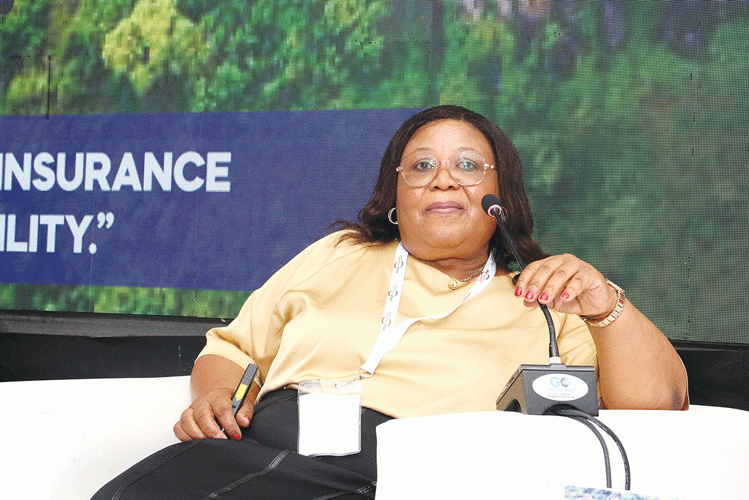
AS the world grapples with a number of emerging risks, climate change has emerged as the top risk demanding urgent response from insurers.
It has also emerged that insurers can take centre stage in averting it’s impacts by playing various roles and advances in climate risk modelling, such as AIR Worldwide’s Climate Change Impact Model have been identified as key in helping re-insurers estimate potential losses more accurately.
Climate change refers to long-term shifts in temperatures and weather patterns. These shifts may be natural, but since the 18th /19th Century, human activities have been the main drivers of climate change, primarily due to the burning of fossil fuels (like coal, oil and gas), which produces heat-trapping gases.
Cyclone Idai is said to have caused damages worth US$1,4 billion, of which insured losses remain unknown and insured losses are estimated to be between 3%-5% thereby leaving a protection gap of 95%-97%.
According to Munich Re, In 2023, insurance claims from natural disasters exceeded US$150 billion globally, marking the year one of the costliest years on record.
As discussions around climate change became topical at the just-ended Insurance Institute of Zimbabwe Annual Conference in Victoria Falls recently, climate risks have been identified to lead to higher premiums and limited coverage availability, especially in high-risk areas like coastal zones.
But Ipec director of insurance and micro insurance Sibongile Siwela said while the industry was facing 10 emerging risks such as cyber security, natural catastrophes, pandemics fraud risk, regulatory risk, climate change was on the top of the list.
However, she said the industry is prepared for climate-related challenges.
- Matiza’s widow in estate wrangle
- SA insurer targets Zim after US$2.4 million payouts
- Addressing climate change the green building way
- Hit hard by storms and forest loss, Zimbabweans building stronger homes
Keep Reading
“I think climate risk is on the top. Climate change, the risk was, it talks to supply of food. If there is drought, people can’t get food. If there are floods, people can’t get, there are more serious problems coming out. I think the industry is prepared,” Siwela said.
“I don’t know if you are aware that we launched the farmer’s basket, an agriculture index insurance product, that we piloted and it was successful. We are working with the Ministries of Finance, Ministry of Agriculture and the insurance industry, short-term industry, to upscale that product and offer it to more provinces and more districts.”
Bullion Group MD Persistence Gwanyanya said there was an urgent need to respond to increasing demand for insurance tailored made insurance products that meet customers’ specific needs and lifestyles, especially in the face of emerging risks such as climate change.
Gwanyanya said the evolving risk landscape, characterised by climate change, cyber security as well as emerging risks demanded urgent response.
“In relation to climate change, insurers are called upon to adapt to the increasing risks associated with climate change, such as natural disasters and extreme weather events. Sustainability is becoming a key consideration in creating value for the insurance industry. Environmental, Social and Governance (ESG) Factors: Insurers are increasingly considering ESG factors in their investment decisions and product offerings.
“Insurers are investing in sustainable businesses and projects that contribute to a more sustainable future,” Gwanyanya said.
Speaking comprehensively on climate change, Emeritus Re Mozambique country manager Mufaro Chauruka said insurers could turn around economies by innovating around climate change. By geographically and sectorally diversifying risk portfolios, Chauruka said insurers can balance exposure to climate risks.
He added that offering discounts on premiums for clients who adopt sustainable practices, such as fire-resilient building materials in wildfire-prone areas can also be crucial.
He stressed that insurers can play a crucial role in supporting climate transition for example through green bonds and investments, promoting renewable energy and climate risk advocacy, among others.
“Re-insurers in Zimbabwe and Africa should provide funding for academic research to enhance understanding of climate risk and enhance modelling. Climate risks may lead to higher premiums and limited coverage availability, especially in high-risk areas like coastal zones.
“Climate change is generally expected to reduce Mozambique’s hydropower capacity. (Uamusse, Tussupova, and Persson (2020) project that reduced run-off to hydropower stations due to climate change make it impossible to use their maximum capacities, resulting in a 10%-20% decline in total power generation available annually in the 21st century.
“In particular, the study estimates that electricity output of the Cahora Bassa hydropower plant will be reduced by 20% by 2100. This will not only affect Mozambique's economy but Zimbabwe, South Africa, Zambia and Malawi,” he said
Looking into the future, he said ongoing investment in green products, innovations in risk assessment, and regulatory alignment are essential as climate risks evolve.
He said climate adaptation and carbon reduction strategies were essential for resilience and long-term industry viability, adding that re-insurers should take ESG seriously and play an important role in educating masses, while touching communities, sponsoring climate change-mitigating projects.
“Climate change-mitigating measures should be in-built in our underwriting requirements,” he said.
Experts believe that should insurers embrace climate change, impacts of climate change can be massively reduced.











